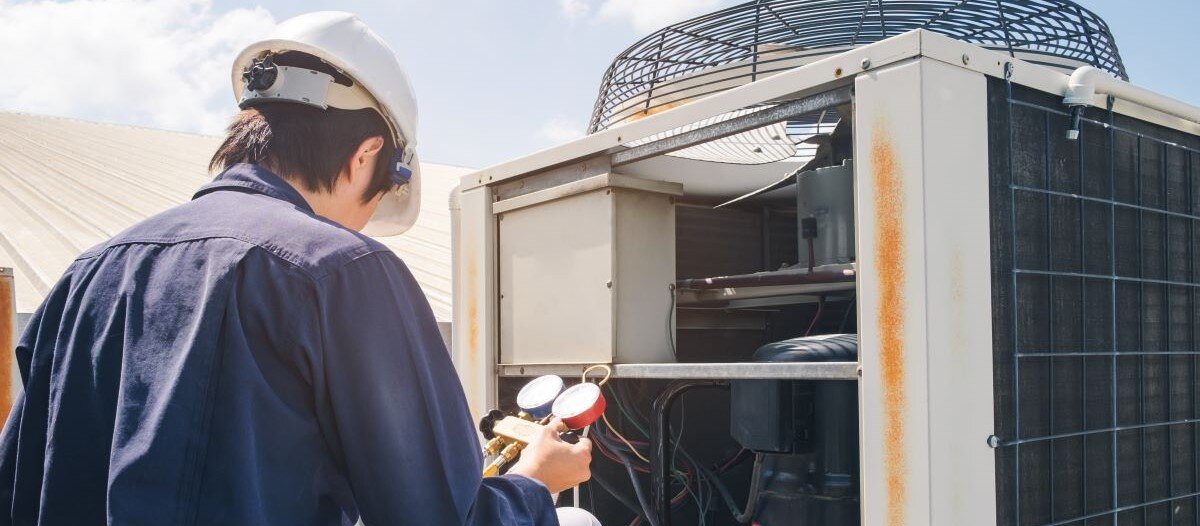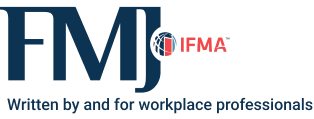Facility Condition Assessments
An FM’s new risk management tool

Facility managers play a critical role in ensuring the functionality, comfort, safety, sustainability and efficiency of their built environment through various risk management efforts. One way facility managers can help identify and correct potential risks is through a facility condition assessment (FCA). While these assessments are typically utilized for both operational and financial decision making – such as asset management, capital planning and portfolio benchmarking – they also provide a deeper understanding of a facility’s current state while identifying potential risks like outdated or faulty systems that can negatively impact the health and safety of staff, occupants and the surrounding community.
What are FCAs?
FCAs are an analysis of a building’s condition as it relates to its age, design, construction methods, materials and systems. To begin, FCAs require the assessor to gather information on the building’s original construction and any renovations or upgrades that have been performed over its lifespan, and in some cases, an estimate of probable costs associated with potential projects. For facility owners and managers, it is best to provide documentation to assist with the assessment development, including:
- Warranty information
- Safety inspection records
- Records indicating the age of material building systems, such as the roof, chillers, boilers, electrical, etc.
- All previous FCA reports
- Pending proposals or contracts for equipment replacement
- A description of future improvements planned
- Americans with Disabilities Act (ADA) survey and status of any improvements
- Drawings and specifications, including as-built or construction
While learning a building through drawings and documentation is a good starting point to develop an understanding of the facility’s history and current state, a physical site walkthrough helps the facility condition assessor ensure accuracy of the results. It also identifies and confirms additions and renovations that have occurred since the date stamped on drawings and creates a more realistic snapshot of the current conditions. In addition, capture technology should be used to include typical elevations of the building’s exterior, site work, parking area, roofing, structural systems, plumbing, HVAC, electrical systems, conveyance systems, life safety systems and any special or unusual conditions.
When complete, FMs will receive an in-depth condition report, including photographic evidence of the findings. Though not typically included in the standard scope, FMs can also request the report to include additional testing and review. These include engineering calculations to determine assets or systems compliance with design requirements, destructive testing, opinions on security posture of the facility and environmental assessments such as asbestos, potable water quality and hazardous wastes. It is important to remember that these assessments represent a snapshot in time, so cost projections can fluctuate based on changing economic or market conditions.
With a FCA in hand, FMs can be better equipped to make strategic decisions on capital renewal, budget planning and funding allocations to determine a course of action that addresses required upgrades to the facility. FCA reports are useful house assts in one place to element rain drain often experienced during retirement or team succession.
Managing risks with FCAs
FCAs can be an important starting point to measure other strategic facility planning initiatives such as system reliability, uptime, operability, maintainability, total cost of ownership, life cycle costing, energy management and master facilities planning – all of which can impact an FM’s risk management efforts related to a building’s performance. The building’s condition gives a measure of the effectiveness of current maintenance programs because it determines useful life of components or systems and compares it with full economic life expected, given good maintenance.
When done systematically and well, FCAs can assist FM leaders in identifying assets, materials, and systems which are near or past useful life and pose a risk for performance failure. For example, if stained ceiling tiles are present throughout multiple spaces within a building, further investigation can reveal many potential larger problems, such as roofing failure, leaking sprinkler pipes or uninsulated HVAC equipment.
With a litigious society where plenty of risks exist, risks are present throughout both the exterior and interior of a building’s footprint. Sidewalks, entrances, and exterior walkways that are uneven, damaged, or otherwise in poor condition could enable tripping hazards. Interior spaces that are not compliant with accessibility standards (such as the European Accessibility Act or Americans with Disabilities Act) can introduce risks for individuals. This is especially important for primary and secondary schools and healthcare facilities to consider protecting the safety of students and patients. FMs can also stay ahead of challenging conversations with code officials that frequent their buildings by identifying obstructed pathways, unclean mechanical rooms and unsigned emergency exits.
FCAs can identify these potential risks and provide FMs with a clear path forward for mitigation and correction. A good FCA can also help with emergency planning and readiness efforts by verifying emergency annunciation technology, such as public address system, security card readers and cameras that are operable and in good working condition – providing yet another level of risk management.
FMs can plan for and incorporate FCAs into their risk management program by determining the internal knowledge of staff as it relates to various assets, systems and areas of expertise. It is common for FMs and engineers to be a jack of all trades. For example, if the chief engineer carries a professional engineer (PE) license in mechanical systems, there could be value in engaging an architectural, electrical and structural expert to assist with rounding out the FCA methodology. Regarding FCAs, external experts help fill in the knowledge gaps, but only if the C-suite is honest about their internal capabilities (and knowledge blind spots).
From there, FMs should conduct condition assessments every three years, or conduct a portion of the overall portfolio annually. If a facility’s staff has a complete understanding of all areas covered within an FCA, they can proceed by conducting the assessment in-house. However, partnering with a service provider who specializes in FCAs, especially for a given industry or building type, can help ensure accuracy, organization and thoroughness of the results. A FCA team can comprise of a stand-alone service provider or a combination of architectural, engineering, energy efficiency or asset management firm. Firms with a multi-disciplinary approach and composition of team members with varying areas of expertise are best positioned to deliver the most effective FCA services.
Another aspect to consider if choosing to partner with a service provider is one that offers forward-thinking technology to house information covering the facility’s construction and renovation history, maintenance, operations and utilities and FCA findings. Such technology is also helpful for FMs to assess their assets in one place, evaluate potential investments, define long-term planning, measure facility performance and ensure any projects conducted, especially those resulting from findings from a condition assessment, are efficient and achieve the organization’s goals.
Regardless of which FMs take to conduct FCAs, it is important to utilize the findings as a part of a risk management program. While these assessments are a first step for asset management, capital planning and portfolio benchmarking, they also help FMs identify potential risks that could result in safety violations, health consequences for building occupants or expensive facility damage if not corrected in time.
Making FCAs a risk management tool can help FMs and their organizations be better equipped to maintain the integrity, safety, health, sustainability, and efficiency for all occupants, staff and the surrounding community.

Dr. Derek Hillestad, Ph.D., CFM, is a senior facilities analyst of SitelogIQ Midwest. Hillestad has more than 22 years of experience with architectural, mechanical, electrical, and energy systems for new and existing facility environments. Having been involved in over 50 facilities-related projects, his industry knowledge includes a strong background in field survey and analysis functions as well as operational optimization of the facilities portfolio. Hillstead earned his doctorate in construction management from Arizona State University. He is an active IFMA member.
Read more on Finance & Business , Operations & Maintenance and Risk Management
Explore All FMJ Topics









